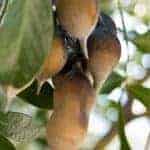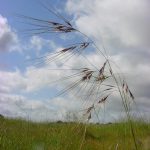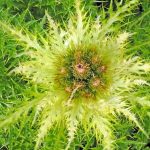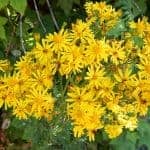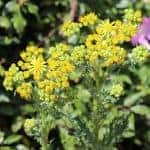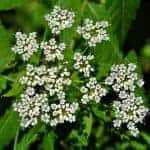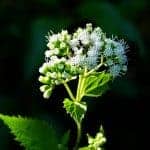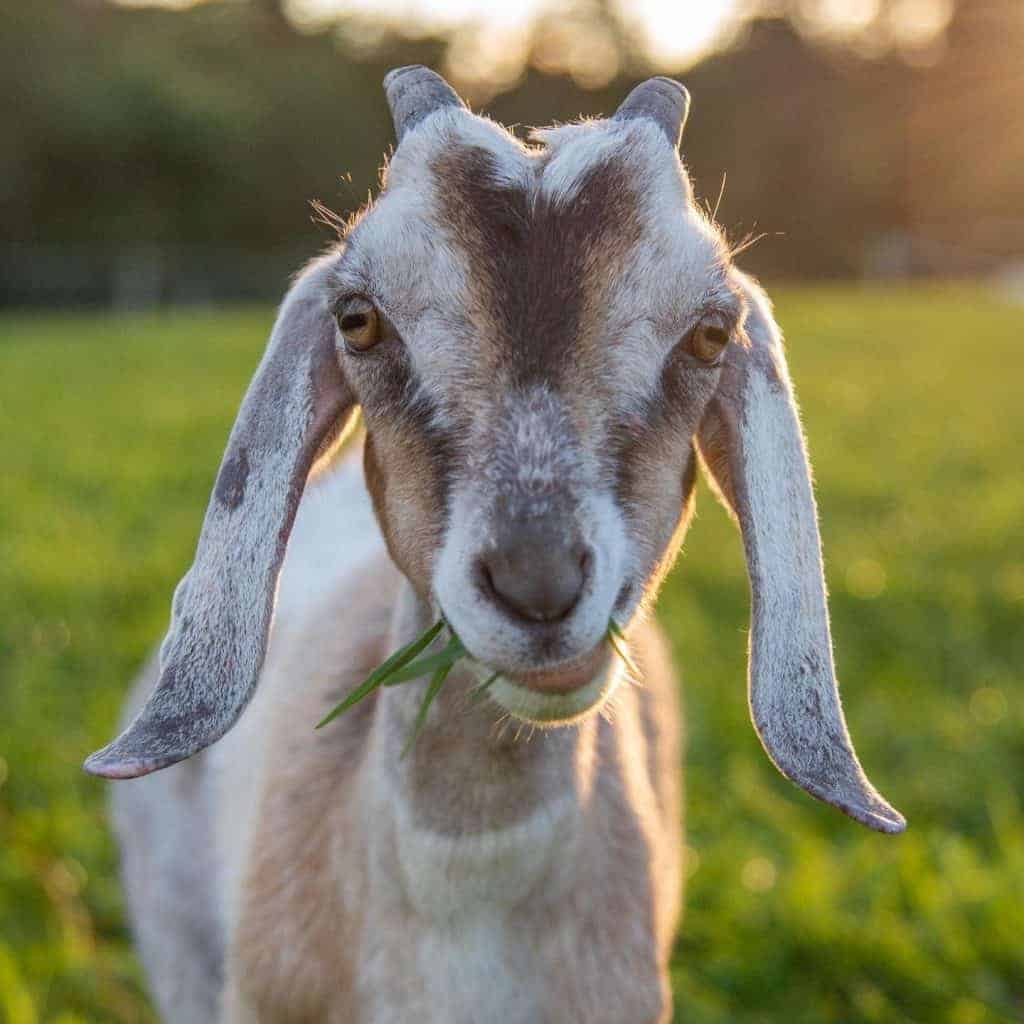
A resident enjoying a tasty nibble. Photo Credit: Lancaster Farm Sanctuary
This resource has been fully reviewed and updated by a member of The Open Sanctuary Project’s staff as of November 19th, 2021
It can be a challenge to ensure goat residents have healthy, happy lives after coming to a sanctuary, and there are many different aspects of care to consider each day. Unfortunately, toxic and poisonous hazards are sometimes overlooked in the hustle and bustle of operating a sanctuary. While minor exposure to many of these toxins are unlikely to cause serious problems, large amounts can cause severe health issues and sadly, even death. There are also some toxins that are highly dangerous even in small amounts.
In order to help ensure you never run into this problem, we have compiled this resource of common plants and other potentially toxic things that have been known to be a problem for goats.
Toxic Plants
This is not an exhaustive list. There may be particular plants that grow in your region that are not included on the list. Check with your region’s agricultural department to ensure you have a full picture of what could be problematic for pigs in your area!
Ask About Activated Charcoal
While prevention is imperative when it comes to protecting your residents from toxins if they accidentally ingest something toxic, the administration of an activated charcoal product may help absorb the toxins. This is not a magic cure and may not be appropriate in all situations, but it can be helpful to have on hand. We suggest asking your veterinarian if there are specific products they recommend for the various species in your care so you can have them ready should you need them. In addition to seeking urgent medical care, if a resident ingests a toxin, ask your veterinarian if administration of activated charcoal is advised.
The Open Sanctuary Project’s Global Toxic Plant Database In addition to individual species resources on toxic plants, we now have The Open Sanctuary Project’s Global Toxic Plant Database where you can search for toxicity based on species and other factors!
Plants That Are Toxic To Goats
We have built a list below of a number of plants known to be toxic in some way to goats. If you’d like to see more possibly toxic plants, Check out The Open Sanctuary Project’s Global Toxic Plant Database and filter Species Afflicted by goat in order to see a list of plants across the world that are toxic to sheep. Please note that, while comprehensive, this list may not contain every single plant toxic to goats!
- diarrhea
- weakness
- depression
- cold extremities
- weak pulse
- irregular heartbeat
- Animals with white skin are most severely affected.
- Black skinned animals are not affected except for showing photophobia if the eyes are not pigmented. Initially the non pigmented skin becomes reddened, severely pruritic, swollen and painful.
- Severe photosensitization results in serum exidation and necrosis of the skin, causing the skin to become dry, parchment-like and eventually sloughing.
- Affected animals become very agitated when exposed to sunlight often desperately seeking shade under vehicles, buildings, trees etc. to avoid exposure to sunlight light.
- Photophobia and tearing may be evident.
- muscle weakness
- muscle tremors
- decreased respirations
- eventual respiratory paralysis
- death
- Animals acutely poisoned by Gelsemium species, neurologic signs predominate, and are characterized by:
- progressive weakness
- convulsions
- respiratory failure
- death
- vomiting
- diarrhea
- increased thirst
- convulsions
- prostration
- circulatory collapse
- Wilted cherry tree leaves cause anxiety
- staggering
- falling down
- convulsions
- rolling of the eyes
- tongue hanging out
- loss of sensation
- dilated pupils
- Yellow coloration to the mucous membranes (jaundice), weight loss, diarrhea, rectal
prolapse, edema of the legs, red urine (hemoglobinurea) are signs of severe liver disease.
- Abnormal neurologic behavior develops (depression, aimless wandering, head pressing) once sever liver degeneration is present.
- Secondary photosensitization develops as a result of severe liver disease.
- White skinned (non pigmented) areas become red, swollen, and painful before the skin dies and sloughs-off as is if severely sun-burned.
- Animals that have consumed the calcinogenic Cestrum diurnum over a period of weeks, develop a syndrome of:
- chronic weight loss
- stiffness
- reluctance to move
- lameness
- eventually recumbency
- Affected animals have elevated blood calcium levels. Death results from progressive calcification of the soft tissues of the body.
- Animals consuming the non-calcinogenic Cestrum species (all Cestrum species except Cestrum diurnum) develop signs of:
- liver failure
- including weight loss
- depression
- icterus
- hepatic encephalopathy
- loss of appetite
- vomiting rumen contents
- green staining around the lips and nose.
- reluctance to move
- muscle tremors
- incoordination
- prostration
- rapid, pounding heart rate.
- coughing may indicate the presence of an inhalation pneumonia resulting from the regurgitation of rumen contents
- difficulty breathing
- open mouth breathing
- excessive salivation
- nervousness
- weakness
- mucous membranes appear pink and redder than normal
- venous blood is cherry red in color
- collapse
- death
-
-
- difficulty in breathing
- coughing due to the pulmonary congestion and edema
- Animals rarely eat the plant unless forced into doing so when other forages are not available.
- difficulty in breathing
-
-
-
- salivation
- colic
- intestinal stasis
- diarrhea
- muscle tremors
- weakness
- rapid heart rate
- weak pulse
- Hemolysis and anemia may be present in severe cases.
- labored breathing
- nasal discharge
- depression
- drowsiness
- incoordination
- paralysis of rear legs
- coma
- death
- salivation
-
-
-
- goats are not as susceptible but can still be affected if enough is ingested
- weight loss
- photosensitivity
- jaundice of mucous membranes
- poor condition
- diarrhea
- abdominal discomfort
- Head pressing, walking aimlessly, convulsions and coma are symptomatic of
advanced liver disease.
- Effects are cumulative, so even small amounts over time may result in a toxic dose.
- Prolonged ingestion leads to liver failure.
- Ingestion of 5% of an animal’s body weight in plant matter can be fatal.
- goats are not as susceptible but can still be affected if enough is ingested
-
-
-
- excessive salivation, vomiting, and abdominal pain usually develops 6-8 hours after the plant is eaten.
- weakness
- recumbency
- increased heart rate
- increased respiratory rate
- Inhalation pneumonia is frequently the cause of death.
- Seizures and convulsions occur in severely poisoned animals.
-
-
-
- acetone odor to the breath
- hindlimb weakness
- knuckling at the fetlocks
- posterior paralysis
- severe muscle tremors
- weakness
- recumbency
- respiratory paralysis
- coma
- death
-
-
-
- dilation of the pupils
- impaired vision
- fast, weak pulse
- nausea
- loss of muscular coordination
- violent, confrontational behaviors
- trembling
- milk is tainted
-
-
-
- excessive salivation
- difficulty in breathing
- open mouth breathing
- nervousness
- weakness
- urinary incontinence
- cherry-red mucous membranes appear
- cherry-red venous blood
- Stressing the animal rapidly leads to collapse and death.
- excessive salivation
-
-
-
- photosensitization (appears as sunburn or white patches)
- increased water consumption
- weight loss and poor condition
- poor vision or star gazing
- lethargy
- rough hair
- stiff gait
- jaundice
- progressive liver disease and failure
- kidney failure due to calcium oxalate crystals
- hypocalcemia
- spontaneous abortion
- bloat
- photosensitization (appears as sunburn or white patches)
-
-
-
- Sudden deaths may occur as a result of acute respiratory failure.
- Pregnant animals may abort at any stage of pregnancy.
- Sudden deaths may occur as a result of acute respiratory failure.
-
-
-
- drooling
- watery eyes
- runny nose
- vomiting
- complete or partial blindness
- drowsiness
- convulsions
- paralysis
- drooling
-
-
-
- unlikely to eat unless starving
- excessive salivation
- vomiting
- colic
- diarrhea
- sap can cause eye irritation
- unlikely to eat unless starving
-
-
-
- decreased feed consumption, excessive salivation
- musculoskeletal degeneration
- poor weight gain
- congenital defects
- enlarged thyroid glands (Goitre) in the fetus and mother
- hair loss
-
-
-
- goats are rather resistant but could be affected by large quantities
- teratogenic (fetal damage, abortion)
- muscle tremors/spasms
- labored breathing
- incoordination
- staggers
- difficulty moving
- agitation
- loss of vision
- head pressing
- convulsion
- coma
-
-
-
- collapse and death may be the first symptoms of acute toxicity
- frequent urination
- mucous membranes (and blood) are brownish in color
- frothing at the mouth
- diarrhea
- unthriftiness
- trembling
- staggering
- abortions
- collapse and death may be the first symptoms of acute toxicity
-
-
-
- loss of appetite
- constipation
- drooling
- excitable
- difficult breathing
- rapid, weak pulse
- convulsions
- death
- loss of appetite
-
-
-
- salivation
- bloating
- muscle weakness
- staggering gait
- recumbency with inability to stand due to muscle paralysis.
- increased respiratory rate
- difficulty breathing
- Sudden death due to severe cardiac arrhythmias is common.
- salivation
-
-
-
- abdominal pain
- stupidity
- dilation of pupils
- loss of appetite
- diarrhea
- loss of muscular coordination
- unconscious
- death
- abdominal pain
-
- weight loss
- photosensitization
- swollen, reddened skin, especially of white skinned areas, or areas with little hair covering. The skin in these areas dies eventually, becoming parchment-like and peels off.
- severe jaundice
- cholecystitis
- Animals will generally not eat this course plant unless there are no other forages available.
- goats are quite resistant but could possibly be affected by large quantities
- distinct odor of onion on the breath, feces, urine and milk of poisoned animals.
- weakness and recumbency due to severe anemia.
- pale mucous membranes
- fast, weak pulse
- dark red-brown colored urine
- increased respiratory rate
- staggering and collapse as a result of anemia
- In severely anemic animals, stress and heavy parasite infestations may be sufficient to cause death.
- goats are more resistant than other animals.
- severe vomiting
- diarrhea
- swollen and inflamed oral tissues
- cold extremities
- dilated pupils
- increased heart rate
- weakness
- death
- decreased appetite
- bloating
- teeth grinding
- rumen stasis
- projectile vomiting of rumen contents leading to dehydration, weight loss, weakness and inhalation pneumonia.
- commonly referred to as spewing sickness
- muscle weakness
- ataxia, especially in lambs causing them to lag behind the flock.
- inhalation pneumonia
- edema
- nasal discharge
- increased heart rate and respiration
- bloat
- kidney damage/failure; diarrhea, sometimes bloody
- lack of appetite
- weight loss
- depression
- weakness
- muscle tremors
- incoordination, staggering, or difficulty walking
- lethargy
- facial twitches
- death may occur within 15 minutes
- frothing at the mouth
- uneasiness
- pain
- dilated pupils
- clamping of jaws
- grating of teeth
- vomiting
- weak, rapid pulse
- diarrhea
- bloating
- convulsions
- respiratory failure
- renal failure
- abortion
- Cows develop edematous swelling of the vulva and udder prior to abortion.
- excessive salivation
- difficulty in breathing
- open mouth breathing
- excitement
- nervousness
- pink or red mucous membranes (more than normal)
- cherry- red venous blood
- Stressing the animal rapidly leads to collapse and death.
- Pregnant animals may abort if they survive the cyanide poisoning themselves.
- diarrhea followed by constipation
- loss of weight
- abortions
- retained fetal membranes.
- After consuming, stress or exercise often induces:
- trembling
- stiff gait
- falling
- difficulty in rising
- drooling
- lack of appetite
- lameness
- bloody saliva
- head-shaking
- weeping eyes
- excessive thirst
- lesions/ulcerations/blisters in mouth
- rubbing; licking
- mouth open, tongue hanging, or yawning
- snorting or blowing
- anxiety
- weight loss
- dehydration
- decline in temperament
- coughing
- vomiting
- occasionally colic and/or impaction.
- inflammation and blisters where plant juice touched the goat
- mouth blisters cause drooling and loss of appetite
- other symptoms similar to those for marsh marigold
- nervousness
- chills
- pale mucous membranes
- loss of coat luster
- strong, rapid pulse
- high temperature
- staggering gait
- weakness
- death
- death may occur within 15 minutes
- frothing at the mouth
- uneasiness
- pain
- dilated pupils
- clamping of jaws
- grating of teeth
- vomiting
- weak, rapid pulse
- diarrhea
- bloating
- convulsions
- respiratory failure
- depression
- inactivity
- arched body
- hind feet placed close together
- excessive salivation
- nasal discharge
- nausea
- rapid, labored breathing
Other Potential Goat Toxins
Blue-Green Algae
Blue-green algae are usually often found in stagnant, slow-moving water when temperatures are high. Consumption of this algae can result in poisoning in goats and other animals. Symptoms often occur quickly after ingestion. Symptoms may include lethargy, lack of appetite, vomiting, hypersalivation, nasal discharge, muscle tremors, coughing, frothing at the mouth, sneezing, involuntary eye movement, labored breathing, and bloody diarrhea. In severe cases, goats may collapse and die. Photosensitization may be a delayed result of ingestion, causing reddening and irritation of the area around the mouth, the ear, or other areas of the body.
Cantharidiasis (Blister Beetle Poisoning)
Blister beetles contain cantharidin, a chemical that works as a defense mechanism against predators. Cantharidin can injure or kill goats when ingested, though horses are more seriously affected. Contact is usually made when goats eat alfalfa hay that beetles were gathered up in and crushed during harvesting. First cutting hay is less likely to contain blister beetles as they tend to gather later in the season. goats that ingest cantharidin may experience symptoms such as diarrhea, depression, abdominal pain, recumbency, increased heart and respiratory rate, dehydration, frequent urination, and in severe cases, death.
If you suspect Blister Beetle Poisoning, contact your veterinarian immediately. If early veterinary care is provided, afflicted goats may recovery.
Copper
While copper is an important mineral in the diet of goats (in very small amounts), it is possible for them to develop copper poisoning as a result of too much copper in the diet. Typically toxicity is due to ingestion of something not intended for goats, such as complete “feeds” or mineral blocks designed for other species. There is a form of secondary copper poisoning as well that is caused by a sudden release of copper from the liver (where it is stored). Times of extreme stress can result in a release of copper in the system that can contribute to copper poisoning. Access to pastures where the feces of pigs or chickens has been spread should be avoided as they have higher concentrations of copper.
Symptoms of copper poisoning in goats may include:
- Pale mucous membranes
- Depression
- Weakness
- Panting
- Jaundice
- Aborted fetuses
- Dark red or brown urine
- Gastric distress
- Death
Grain Overload (Acidosis, Grain Poisoning)
Grain overload occurs when goats eat large amounts of grain, causing carbohydrates to be released in the rumen and ferment instead of being normally digested. Lactic acid is produced resulting in slowing of the gut, dehydrations, and sometimes, sadly, death. While wheat and barley are the most common causes of grain overload, lupins and oats can also be the culprit.
Grain overload is most commonly seen when ruminants have acceess to bins or bags of grain or have an outdoor living space that has had grains recently harvest, leaving leftover grain. Grain overload can also happen if a goat resident has a change in diet to quickly as opposed to a gradual shift. Similar issues can happen from ingesting large amounts of certain fruits or even potatoes in a short amount of time.
Signs of grain overload include:
- Bloating (left side of abdomen)
- Abdominal pain
- Recumbancy
- Lack of appetite
- Depression
- Dehydration
- Increased thirst
- Diarrhea
- Muscle weakness
- Staggering
- Standing with legs apart
- Collapse
- Laminitis
- Death
If you suspect a goat has grain overload, contact a veterinarian immediately. The sooner treatment can begin, the better. The course of treatment will depend on how severe the condition is. depends on the severity of the condition.
Lead Toxicity
Lead poisoning can be serious for goats. While lead was once used in paint (and even pesticides), it can also be found in the environments where old machinery or railroad ties, or leaded gas was once stored. Residents could ingest paint by chewing or licking surfaces that contained lead or even by ingesting certain plants that have absorbed lead from the polluted soil.
To be safe, you can have the soil tested. Local agricultural extension offices or environmental conservation services are good places to contact to learn more about testing your soil. The process should be fairly easy. In the meantime, be sure to prevent residents from accessing areas where you suspect they may come into contact with lead.
You may see the following symptoms:
- Lack of appetite
- Diarrhea
- Weight loss
- Weakness
- Anemia
- Blindness
- Staggering
- Rumen Stasis
- Teeth grinding
- Headpressing
- Dullness
- Lack of coordination
- Aborted fetus
- Death
Consult a veterinarian immediately if you suspect a resident has ingested lead or is beginning to show symptoms of lead poisoning.
Mycotoxins
Mycotoxins are a toxin produced by molds (fungi) that are harmful to many animals. Mycotoxins can affect goats through contaminated food or bedding. Moist, warm environments encourage mold growth. While goats are more resistant to the effects of mycotoxin than horses or some other animals, they can still be seriously affected. The type, amount, and frequency of exposure to mycotoxin affect the severity of toxicosis. Pregnant goats may be more susceptible to some mycotoxins, causing additional reproductive health symptoms. Some signs of different mycotoxin poisoning include:
- Weight loss
- Diarrhea
- Appetite loss
- Respiratory issues
- Increased susceptibility to disease
- Poor coat quality
- Impaired growth
- Stiffness
- Recumbency
- Lethargy
- Jaundice
- Reproductive issues (lack of milk, infections, abortions etc..)
Prevention is key in preventing serious health issues related to mycotoxin toxicosis. Luckily, there are a number of steps you can take to help protect resident goats:
- Store any grains, hay, or other foods in cool, dry, and clean areas.
- Keep grains and concentrates in secure food storage bins.
- Try to keep food storage areas protected from mice and rats and other wildlife.
- Use the oldest food first and try to use up open bags within a few weeks, fewer even during the summer.
- Clean storage cans and bins thoroughly.
- Keep living areas clean.
- Check with the manufacturer or supplier of the product to see if they regularly test for the presence of mycotoxins in grains before mixing food. If they don’t, try to find another supplier.
- If you are concerned about the possibility of mycotoxin contamination, have your food stores tested. This could be especially important if you have goats that show initial signs of mycotoxin exposure.
Pesticides, Herbicides, And Rodenticides
It may not come as a surprise that pesticides, some herbicides, and rodenticides can cause toxicosis in goats if ingested. If goats ingest plants that have been sprayed with certain herbicides, they can become ill or even die. Many herbicides have been developed to be safer for animals but ingestion of large amounts can cause poisoning. Many pesticides can also cause toxicosis.
Rodenticides can as well and we encourage sanctuaries to seek out alternatives. While rats and mice can pose challenges for sanctuaries, it is important to respect them and use compassionate mitigation practices. Many rodenticides are anticoagulants (They prevent the blood from clotting) though there are other rodenticides that can cause serious issues and fatality if ingested. It is imperative that they do not come into contact with these poisons. There are many new and innovative ways to address rodent populations that are more effective and compassionate.
Early treatment is critical. If you suspect a resident may have ingested any of the poisons above, contact your veterinarian immediately. Blood tests may confirm poisoning.
Selenium
Selenium is a highly toxic element when taken in quantities larger than the necessary dietary amount. While selenium poisoning can be an issue for many animals, goats and other animals that browse and graze are generally at a higher risk. Plants can contain varying amounts of selenium depending on the presence and environmental factors in the soil. Poisoning can be acute or chronic.
Symptoms of acute selenium poisoning may include:
- Lack of appetite
- Diarrhea
- Salivation
- Anxiety/Restlessness
- Increases heart rate
- Lack of coordination
- Muscle weakness in the hind limbs
- Paralysis in the hind limbs
- Arching back
- Recumency
- Respiratory distress
Symptoms of chronic selenium poisoning may include:
- Loss of appetite
- Anemia
- Joint stiffness
- Dull coat
- Loss of hair
- Lameness
- Pain
- Hoof issues
Selenium deficiency can also be an issue in various regions and cause health issues. Talk with your vet about proper dietary considerations for goat residents and how to avoid selenium poisoning or deficiency in your area.
Snakebites
Venomous snakebites are not common, but when they occur, should be treated seriously and immediately. A snake can bite several times, so if you notice a snakebite, look for others. Snake venom varies by species, and the severity of a bite can also be influenced by the size, age, and the number of bites. Most venoms can impair blood clotting and damage the heart, while some others contain neurotoxins. Signs of snakebite may include:
- Swelling at site
- Pain
- Heat at site
- Bleeding
- Salivation
- Rapid heart rate
- Lameness
- Depression
- Lack of appetite
- Necrosis
- Black spots on skin
- Staggering
- Death
Seek veterinary care immediately if a resident is bitten by a venomous snake. Do NOT try to suck the venom out or place a tourniquet. Keep the resident calm while seeking immediate veterinary care. Depending on the severity of the bit, treatments may include antivenin, pain medications, fluid therapy, wound treatment, tetanus vaccination, and antibiotics. Check out our Compassionate Wildlife Practices At Your Animal Sanctuary for some tips on how to dissuade snakes from your property.
Wood Stains And Paints
Some wood stains and paints can be toxic to goats. Goats may try to chew on painted surfaces and can become ill if the stain or paint is toxic. Try and purchase paints and stains that are specially made for barns and fencing and listed as animal or “livestock” friendly.
Foods That May Be Toxic To Goats
Consider These Variables
You may see food on this list that you have fed to your residents without any apparent issue. That may be because some foods are toxic in higher amounts while others are toxic in small amounts or whether they are being consistently offered the food over a period of time. It can also depend on the individual. We all have sensitivities to different things. Just as there are dogs who have eaten chocolate and don’t show clinical or subclinical signs of poisoning, there are many dogs that weren’t so lucky. The amount that may cause one resident to become ill (or even die) may be different for another resident. Different breeds or species can also affect their sensitivity to a toxin. In addition to these considerations, certain plants, fruits, vegetables, and other foods listed below may contain varying amounts of the toxin. The toxicity in some fruits and vegetables may even depend on their ripeness, the amount of sun exposure, the temperature, and more! Below we have put together a list of foods that are known to contain some toxin that is potentially harmful to goats. It is our hope that providing this information will help you provide the best care possible to your residents. When possible, we have researched scientific papers to provide solid sources and tried to give more details. However, it is not an exhaustive list and is not meant to replace veterinary advice.
If You Have The Slightest Doubt…
Just because something might not be listed here as a toxic food or substance for goats, please do not take that to mean it’s safe to give them! Even normally non-toxic produce can cause health issues if given in large amounts. Check our Daily Diet, Supplement, & Treats For Goats resource and see if it’s listed as a safe treat for goat residents. If you aren’t positive that it will be safe for goats, it’s best to avoid feeding it to them in order to be as safe as possible!
In addition to the above, we cover some foods that can be toxic to goats and foods that are often questioned in terms of toxicity but may be fairly benign:
Anything With Pesticides Or Herbicides: Most vegetables and fruits are sprayed with these chemicals, which, while considered “safe” in certain amounts, can certainly be a source of concern when feeding your residents treats. Organic produce is safe from these chemicals, but for those foods that have been sprayed, it is important to peel or scrub to remove any chance of ingestion to avoid ingestion of toxins. Prevent residents from accessing areas that have been sprayed to avoid poisoning.1,2,3
Avocado: The chemical, persin, that is present in avocado trees (bark, leaves, skin, and pit) is very toxic to many species, including goats.4,5,6,7 Goats are in danger of ingesting persin through avocado leaves if they have access to trees. Lactating goats that have eaten the leaves of avocado trees develop non-infectious mastitis.5,6,7 Goats that have ingested persin could present with symptoms such as rapid heart rate, tachycardia, rapid or abnormally deep breathing, open-mouthed breathing, excess fluid retention in the lungs, coughing, heart issues, lying down, and death. Different varieties may contain more persin than other varieties. Guatemalan varieties are more commonly associated with poisonings and have higher amounts of persin than some other varieties, though other varieties can still be toxic.4,5
Bitter Almond Seeds And Leaves: Ruminants are more susceptible to cyanide, also known as prussic acid, poisoning than animals with a simple stomach.8,9 The leaves and seeds of bitter almond trees can cause cyanide poisoning in large enough amounts.8,9 While both fresh and wilted leaves contain cyanogenic glycosides, wilted leaves caused by frost, drought, or branches being recently cut are the main source of concern with poisoning.10 Seeds also contain a cryogenic glycoside that can be toxic. While the almonds we are generally most familiar with, sweet almonds may contain a small amount of cyanide, bitter almonds contain significantly more.11 The nuts you find at the store are generally sweet almonds that have been processed. Some symptoms of cyanide poisoning include convulsions, lack of coordination, muscle weakness, salivation, lethargy, depression, rapid or abnormal pulse, high body temperature, labored breathing, uncoordinated, jerky movements, head pressing, collapse, coma, and death.8,9,10,12 A classic sign of cyanide poisoning that distinguishes it from nitrite poisoning is bright, cherry-colored blood.8,9,12 Alternatively, individuals suffering from nitrate poisoning may have dark brown colored blood.8
Brassicas: While many goats nibble on brassicas such as broccoli, cauliflower, cabbage, turnips, brussels sprouts, mustards, radishes, and rape and are just fine, brassicas do have the potential to cause health issues in goats.13,14,15,16,17,18,19 It is often tolerated in certain amounts in goats. It is a common agricultural practice to use certain brassica crops as fodder which has been considered safe in certain amounts.13 However, there have been documented reports and studies of different kinds of brassicas causing various issues.
Cabbage caused nitrate poisoning in 10 goats. Symptoms included respiratory distress, lack of coordination, head pressing, rapid heart rate, muscle tremors, loss of bodily control, bluish brown mucous membranes, and coma.17,18
Cabbage has been shown to cause hypothyroidism and goiters in pregnant ewes and their kids. This has also been observed in lambs.13,17
Studies have shown that hemolytic anemia can be caused by consumption of 11-13 pounds or so of kale daily over 5-6 weeks in goats weighing 110-155 pounds. Symptoms can include depression, lethargy, weakness, paleness, jaundice, and dark urine.15,16,19
Large amounts of brassicas may cause polioencephalomalacia (PEM), a neurological disease with clinical symptoms of head pressing, convulsions, blindness, circling, loss of coordination, recumbency, involuntary eye movement.14
Toxicosis can be chronic, developing over a period of time while being fed brassicas or acute, developing quickly after unmanaged access or excessive amounts being consumed.11,16 Growing goats are more susceptible to developing hemolytic anemia from brassica poisoning, as are unwell individuals and those with parasites.16 Use caution when offering brassicas to goat residents. Treats are unlikely to cause issues and larger amounts may be okay for some but not others. Play it safe and dole out brassicas with care.
Cassava: Cassava has the potential to cause cyanide poisoning. Ruminants are more susceptible to cyanide poisoning than monogastric animals.20 In many regions, cassava is an important part of the diet for humans and, in an agricultural context, animals.21,22 Different species of animals exploited in agriculture are sometimes given a diet that consists, in part, of cassava (tuber, leaves, peels) that has been processed but sometimes fed fresh.21 There are a number of ways to process cassava that affects the amount of HCN including heating, drying, fermenting, chopping, grating, peeling, soaking, boiling, grinding, and ensiling.21 According to some studies, fresh peels appear to contain the highest levels of toxin.21 Cyanide poisoning through the indigestion of unprocessed or improperly processed cassava can result in acute or chronic poisoning. Some symptoms of cyanide poisoning include convulsions, lack of coordination, muscle weakness, salivation, lethargy, depression, rapid or abnormal pulse, high body temperature, labored breathing, uncoordinated, jerky movements, head pressing, collapse, coma, and death.8,9,10 A classic sign of cyanide poisoning that distinguishes it from nitrite poisoning is bright, cherry-colored blood.9,10 Take extreme care when considering feeding cassava products to goat residents, especially if you are not fully familiar with the risks and the proper ways to process cassava. Always speak to your veterinarian first.
Cherry Leaves: The leaves, as well as the pits, of cherry trees, can cause cyanide/prussic acid poisoning.8,9,10,23 Ruminants are especially susceptible to cyanide poisoning through the ingestion of plants as the toxin is released during fermentation in the rumen and quickly absorbed into the bloodstream.9,10 Both fresh and wilted leaves can be a source of poisoning, though wilted leaves, especially those after a frost, are considered especially dangerous (There are reports of fresh leaves being eaten without incident but better safe than sorry.).10 Living spaces should be free of cherry trees and leaves or pits shouldn’t be directly fed. Some symptoms of cyanide poisoning include convulsions, lack of coordination, muscle weakness, salivation, lethargy, depression, rapid or abnormal pulse, high body temperature, labored breathing, uncoordinated, jerky movements, head pressing, collapse, coma, and death.8,9,10,23 A classic sign of cyanide poisoning that distinguishes it from nitrite poisoning is bright, cherry-colored blood.8
Chocolate: While we didn’t find much information into the potentially toxic effects of theobrimine and caffeine from chocolate products to goats, it has been shown to cause issues for other ruminants, particularly cows.25,26,27 While concentrations of the toxin theobromine and caffeine are fairly lower in many chocolate products, the darker the chocolate, the more theobromine it contains.26,27 Cocoa bean shells and other chocolate byproducts are sometimes used as supplementation to diets for a number of farmed animal species.25,26,27 Depending on the amount of theobromine (and caffeine) contained in the waste/byproduct, the type of cocoa/chocolate product (husks, meal, confectionary waste), the percentage of waste/byproduct is included in the overall diet, and even the age of the individual, the diet may prove to be “acceptable” in an agricultural context. Avoiding chocolate shouldn’t be difficult as there are many other more appropriate treats for goat residents.
Corn Stalks: Corn stalks can contain nitrates (like many plants) but are more likely to be the cause of nitrate poisoning than many other plants though certain plants like sorghum and sudangrass are particularly high risk.34 (Nitrates turn to nitrite through a physiological process, hence nitr-ite poisoning is caused by cornstalks high in nitr-ates.). Stalks of corn contain the highest levels of nitrates in the plant, though the leaves also contain nitrates, as well as the grain itself, just in lower amounts.34 It is a good idea to find out if plants in your region have a high risk of accumulating unhealthy levels of nitrates. Talking to your local extension office can be helpful. Nitrite poisoning is a higher risk if a resident has ingested cornstalks or leaves after they have wilted, which can happen after a bout of cold weather.34 Younger plants generally also have higher concentrations.34 Symptoms of nitrate poisoning may include salivation, staggering, dizziness, rapid breathing, increased heart rate, muscle tremors, weakness, frequent urination, bloat, a bluish tinge to the skin, chocolate brown blood, and death.35,36
Fruit Pits: Fruits with pits/stones (such as peaches, apricots, cherries, and plums) are often fine to offer to your goat residents as treats, so long as the pits have been removed. In addition to the risk of larger whole fruits and pits becoming lodged in the digestive tract, the pits contain cyanogenetic glycosides, which can be toxic.8,9,10,20,23 Additionally, while cherry leaves are infamous for causing cyanide poisoning, the ingestion of the leaves of other stone fruits should be avoided as well until there is more information about their potential toxicity risks, especially after a cold shock in the weather or drought.8,10 Ingestion of these, especially cracked and broken bits of seeds and pits that release cyanide, can cause Some symptoms of cyanide poisoning include convulsions, lack of coordination, muscle weakness, salivation, lethargy, depression, rapid or abnormal pulse, high body temperature, labored breathing, uncoordinated, jerky movements, head pressing, collapse, coma, and death.8,9,10,23,37 A classic sign of cyanide poisoning that distinguishes it from nitrite poisoning is bright, cherry-colored blood.8
Green Potatoes: Green potatoes (and potato vines), particularly the skins and sprouts “eyes”, contain solanine, which can be poisonous to ruminants.38,39,40,41 If fed raw and whole, there is also a risk of choking and associated bloat.39,42 Overingestion can also cause bloat issues if a large amount of raw potatoes is consumed quickly.39,42 It can cause serious illness and even death in high enough amounts. Symptoms may include dilated pupils, weakness, staggering, lack of coordination, depression, recumbency, salivation, vomiting, diarrhea, gastric distress, respiratory distress, coma, and suffocation.38,39,40,42 The most solanine is found just under the skin, so potato peels are best avoided entirely.39,43 Potatoes that have been in the sun will have increased solanine.41,42,43 Potatoes also contain chaconine, another chemical that can be toxic to ruminants.39 Solanine is heat stable, meaning just boiling won’t necessarily reduce the solanine, though it has been posited that the toxin leaches into the water from the potato (which should be disposed of), which would reduce the amount in the actual potato as would peeling before boiling.43 Frying is said to do a better job of breaking down solanine in potatoes but fried potatoes aren’t very healthy for goat residents.40,43 The level of toxic compounds can vary depending on environmental factors like climate and the type of soil it is grown in.40 If you decide to offer a bit of potato as a treat, to be safe be sure they are free from green colorations and sprouts “eyes” and are peeled, boiled, the water drained and they are rinsed before offering. Never feed potato vines.
Onions: Goats are generally more resistant to onion poisoning than some other resident species. However, in large enough amounts under the right circumstances, goats can still develop anemia.44,45,46,47 Symptoms of onion poisoning may include weakness, collapse, recumbency, sluggishness, lack of appetite, staggering, high heart rate, high respiratory rate, collapse, dark-colored feces, dark red urine, and, in some cases, death.44,45,46,47 While it would generally require large amounts of onion consumption to produce these symptoms goats and even depend on how frequently and how quickly it was consumed, the amount that will affect individuals can vary and may not be known. Health, reproductive, and age status could all play a factor in the individual’s susceptibility.46,47
Processed Human Food: Processed foods, especially those that are super greasy, salty, or sweet, while not necessarily toxic, aren’t the healthiest option and should be avoided or strictly limited as an occasional treat.
Rhubarb Leaves: Although sheep are more commonly affected, rhubarb contains high amounts of oxalic acid (in the leaves) which could be toxic to goats if ingested in large enough amounts.39,48,49,50 The stalks contain significantly less oxalic acid than the leaves.48,49 Although goats are less likely to experience clinical disease than sheep, the possible symptoms of poisoning may include stones in the urinary tract (a particular issue for male neutered goats) vomiting, diarrhea, bloat, gastric distress, and hypocalcemia (low calcium levels in the blood) which can cause weakness, lethargy, lack of appetite, difficulty moving, and recumbency.39,48,49,50 Possible poisoning depends on a number of factors including whether the individual has gradually been eating rhubarb or other plants containing high amounts of oxalic acid, how quickly they have consumed them, and the overall amount they have consumed.50 Factors such as soil composition, weather, region, and type of rhubarb can all affect the levels of oxalic acid.50 Be sure goat residents don’t have access to rhubarb plants and don’t give leaves as treats.
Salt: While it is important that goats have a healthy level of salt in their diet, there is such a thing as too much and this can cause serious health issues. Salt poisoning can have serious consequences and even be fatal in goats.39,51,52,53 Prevention is key. Salt can result in goats receiving a normal amount in the diet but a lack of access to adequate water or excessive amounts of salt in the actual diet.39,51,52,53 If you suspect salt poisoning, call your veterinarian immediately as soon as possible. Access to unrestricted amounts of water after deprivation can actually cause serious issues. Smaller amounts of water offered over a period of time are safer.39,51,52 Ask your vet what the appropriate amount and intervals are in case of salt poisoning. Goats poisoned by salt may experience symptoms such as increased thirst, salivation, head tilting, dilated pupils, lowered head, dark urine, depression, vomiting, diarrhea, abdominal pain, lack of coordination, circling, head pressing, seizures, muscle twitching, staggering, collapse, coma, and death, in severe cases.39,51,52,53 Be sure goat residents are getting the correct amount of salt in their diet as too much or too little can have serious consequences. Avoid feeding residents salty treats.
Visibly Moldy Or Rotten Foods: In addition to sweet potatoes, other rotten or moldy foods can contain mycotoxins that can cause serious health issues for ruminants.54,55,56,57,58 Different mycotoxin poisoning can result in different symptoms, ranging in severity. Goats may be more resistant to some than other species but moldy food should still never be fed. Some of these symptoms can include diarrhea and ruminal stasis, a lack of interest in engaging with their surroundings, and death.56,57
SOURCES: POTENTIALLY TOXIC FOODS
1. Herbicide Poisoning In Animals | Merck Veterinary Manual (Non-Compassionate Source)
2. Chapter 44 – Toxicity of Herbicides | Veterinary Toxicology (Non-Compassionate Source)
3. Suspected Poisoning Of Domestic Animals By Pesticides | Science Of The Total Environment
4. Guide To Poisonous Plants | Colorado State University (Non-Compassionate Source)
5. Avocado Toxicosis In Animals | The Merck Veterinary Manual
6. Histopathological Changes Caused By Accidental Avocado Leaves Toxicity In Rabbits | International Journal Of Pharmaceutical Science And Research (Non-Compassionate Source)
8. Review On Cyanide Poisoning In Ruminants | Journal Of Biology, Agriculture, And Healthcare (Non-Compassionate Source)
9. Prussic Acid Poisoning In Livestock | Washington State University Extension (Non-Compassionate Source)
10. Prussic Acid Poisoning Potential In Frosted Forages | Iowa State University (Non-Compassionate Source)
11. Potential Toxic Levels Of Cyanide In Almonds (Prunus Amygdalus), Apricot Kernels (Prunus Armeniaca), And Almond Syrup | ISRN Toxicology (Non-Compassionate Source)
12. Clinical And Pathological Effects Of Short-Term Cyanide Repeated Dosing To Goats | Journal Of Applied Toxicology (Non-Compassionate Source)
13. Forage-Related Cattle Disorders Brassicas: Be Aware Of The Animal Health Risks | University Of Kentucky College Of Agriculture, Food And Environment Cooperative Extension Service (Non-Compassionate Source)
14. Polioencephalomalacia In Ruminants | The Merck Veterinary Manual (Non-Compassionate Source)
15.Bioactive Organosulfur Phytochemicals In Brassica Oleracea Vegetables—A Review | Food And Chemical Toxicology (Non-Compassionate Source)
16. Haemolytic Anaemia In Ruminants Fed Forage Brassicas: A Review | Veterinary Research (Non-Compassionate Source)
17. Congenital goitre associated with consumption of cabbages [in goats] | AGRIS (Non-Compassionate Source)
18. Nitrate Poisoning due to Ingestion of Cabbages (Brassica oleracea var. capitata L.) (Brassicaceae) in Kitui County, Kenya | The Scientific World Journal (Non-Compassionate Source)
19. Diseases Of The Hematologic, Immunologic, And Lymphatic Systems (Multisystem Diseases) | Sheep, Goat, And Cervid Medicine (Non-Compassionate Source)
20. Review On Cyanide Poisoning In Ruminants | Journal Of Biology, Agriculture And Healthcare (Non-Compassionate Source)
21. Detoxification Of Cassava Products And Effects Of Residual Toxins On Consuming Animals | The Food And Agriculture Organization (FAO) (Non-Compassionate Source)
22. A Review Of Ruminant Responses To Cassava-Based Diets | Cassava as Livestock Feed in Africa (Non-Compassionate Source)
23. Prunus Spp. Intoxication In Ruminants: A Case In A Goat And Diagnosis By Identification Of Leaf Fragments In Rumen Contents | Journal Of Veterinary Diagnostic Investigation (Non-Compassionate Source)
25. Theobromine Toxicity And Remediation Of Cocoa By-Prodeucts: An Overview | Journal Of Biological Sciences (Non-Compassionate Source)
26. The Effects of Chocolate and Chocolate by-product Consumption on Wild and Domestic Animals | Chocolate In Health And Nutrition (Non-Compassionate Source)
27. Theobromine As Undesirable Substances In Animal Feed: Scientific Opinion Of The Panel On Contaminants In The Food Chain | The EFSA Journal (Non-Compassionate Source)
34. Nitrate Toxicity In Livestock | Oklahoma State University Extension (Non-Compassionate Source)
35. Nitrate And Nitrite Poisoning In Sheep And Goats Caused By Ingestion Of Portulaca Oleracea | Livestock Diseases (Non-Compassionate Source)
36. Plant Poisoning of Small Ruminants | Colorado State University (Non-Compassionate Source)
37. Toxic Plants and the Common Caprine | Cornell College Of Agriculture and Life Sciences
38. Steroid Alkaloids | Cornell College Of Agriculture And Life Sciences (Non-Compassionate Source)
40. Toxicants That Affect The Autonomic Nervous System (And, In Some Cases, Voluntary Nerves As Well) | Veterinarian Toxicology (Non-Compassionate Source)
41. Common Poisonous Plants | Cornell University Library (Non-Compassionate Source)
42. Cautions | University Of Nebraska-Lincoln, Institute Of Agriculture And Natural Resources (Non-Compassionate Source)
43. Natural Toxicants | The Food And Environment Research Agency
44. Onions | Colorado State University Guide To Poisonous Plants (Non-Compassionate Source)
46. Clinical, Haematological And Biochemical Evaluation Of Onion (Allium Cepa) Toxicity In Goats | Revue De Médecine Vétérinaire (Non-Compassionate Source)
47. Oxidative Effects Of Long-Term Onion (Allium Cepa) Feeding On Goat Erythrocytes | Comparative Clinical Pathology (Non-Compassionate Source)
48. Plants Causing Kidney Failure | A Guide To Plant Poisoning Of Animals In North America
49. Plants Toxic To Livestock- Rhubarb | Cornell College Of Agriculture And Life Sciences
50. Toxicosis | American Institute For Goat Research (Non-Compassionate Source)
51. A Guide To Drought Feeding Of Goats | Department Of Environment And Primary Industries (Non-Compassionate Source)
52. Salt Poisoning | Veterinary Handbook Disease Finder (Non-Compassionate Source)
53. Outbreak Of Salt Poisoning In Goats In The State Of Pará, Brazil | Semina: Ciencias Agrarias
55. Aflatoxicosis | The Merck Veterinary Manual
56. Occurrence Of Mycotoxins In Cassava (Manihot EsculentaCrantz) And Its Products | International Food Journal Of Safety, Nutrition And Public Health (Non-Compassionate Source)
57. Epidemiological Investigation of Moldy grain and fodder poisoning in goat in Kathmandu Valley | Biosciences, Biotechnology Research Asia58. Occurrence And Significance Of Mycotoxins In Forage Crops And Silage: A Review | Journal Of The Science Of Food And Agriculture (Non-Compassionate Source)
MAIN TEXT SOURCES
Poisoning of Livestock by Plants | Ontario Ministry Of Agriculture, Food And Rural Affairs (Non-Compassionate Source)
Common Weeds Poisonous to Grazing Livestock | Ontario Ministry Of Agriculture, Food And Rural Affairs (Non-Compassionate Source)
Common Poisonous Plants | Ohio State University (Non-Compassionate Source)
Guide to Poisonous Plants | Colorado State University (Non-Compassionate Source)
Protect You Horses And Livestock From Toxic Plants | Washington State Department Of Agriculture (Non-Compassionate Source)
Blister Beetles | North Carolina State University Extension Service (Non-Compassionate Source)
Overview Of Copper Poisoning | Merck Manual Veterinary Manual
Copper Toxicity In Sheep And Goats (Proceedings) | DVM 360 (Non-Compassionate Source)
Copper Poisoning In Small Ruminants | Colorado State University (Non-Compassionate Source)
Grain Overload, Acidosis, Or Grain Poisoning In Stock | Department Of Primary Industries And Regional Development’s Agriculture And Food (Non-Compassionate Source)
Grain Overload In Ruminants | The Merck Veterinary Manual
Experimental Lead Poisoning In Horses And Spanish Goats | Southwest Vet
Is There Lead In Your Pasture? | The Horse
Mycotoxicoses In Domestic Animals | Vet 360 (Non-Compassionate Source)
Effects Of Fumonisin B1-Contaminated Feeds On Weanling Angora Goats | Journal Of Animal Science (Non-Compassionate Source)
Toxicopathological Studies On The Effects Of T-2 Mycotoxin And Their Interaction In Juvenile Goats | Plos One (Non-Compassionate Source)
Experimental Selenium Poisoning In Nubian Goats | Veterinary And Human Toxicology Toxin Topic: Snakebites And Horses | The Horse (Non-Compassionate Source)
Diagnostic Exercise: Sudden Death Associated With Myocardial Contraction Band Necrosis in Boer Goat Kids| Diagnostic Exercise Column (Non-Compassionate Source)
Goat Nutrition Selenium | USDA Cooperative Extension (Non-Compassionate Source)
Biochemical and hematological study of goats envenomed with natural and 60Co-irradiated bothropic venom | Journal Of Venemous Animals And Toxins (Non-Compassionate Source)
What Is The Impact Of Snakebite Envenoming On Domestic Animals? A Nation-Wide Community-Based Study In Nepal And Cameroon | Toxicon: X (Non-Compassionate Source)
Rattlesnake Envenomation In Three Dairy Goats | Case Reports In Veterinary Medicine (Non-Compassionate Source)
Animal-Friendly Barn And Fence Paint For Horse Stalls | Stuff For Petz
If a source includes the (Non-Compassionate Source) tag, it means that we do not endorse that particular source’s views about animals, even if some of their insights are valuable from a care perspective. See a more detailed explanation here.




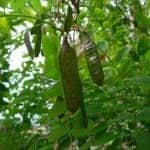
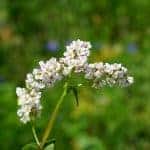
![Homer Edward Price [CC BY 2.0 (https://creativecommons.org/licenses/by/2.0)]](https://opensanctuary.org/wp-content/uploads/2019/07/Carolina-Jessamine_2943176282-150x150.png)
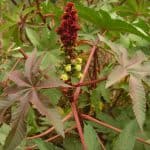
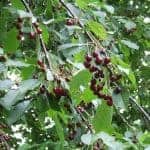
![Vengolis [CC BY-SA 4.0 (https://creativecommons.org/licenses/by-sa/4.0)]](https://opensanctuary.org/wp-content/uploads/2019/07/Blue_Rattlepod_5390-150x150.jpg) prolapse, edema of the legs, red urine (hemoglobinurea) are signs of severe liver disease.
prolapse, edema of the legs, red urine (hemoglobinurea) are signs of severe liver disease.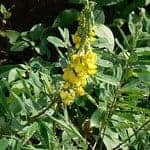
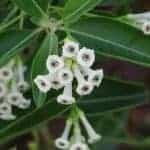
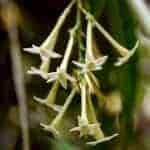

![Dick Culbert from Gibsons, B.C., Canada [CC BY 2.0 (https://creativecommons.org/licenses/by/2.0)]](https://opensanctuary.org/wp-content/uploads/2019/07/Baileya_multiradiata_the_Desert_Marigold_9239930339-150x150.jpg)
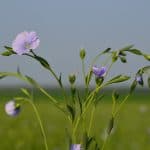
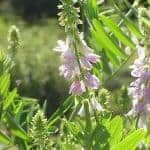


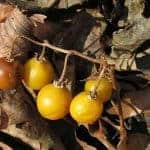
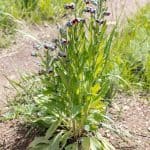
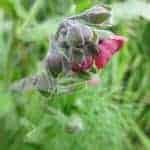 advanced liver disease.
advanced liver disease.![Photo by David J. Stang [CC BY-SA 4.0 (https://creativecommons.org/licenses/by-sa/4.0)]](https://opensanctuary.org/wp-content/uploads/2019/07/Pieris_japonica_Mountain_Fire_15zz-150x150.jpg)
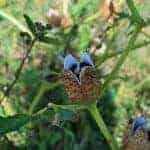
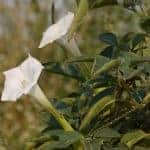
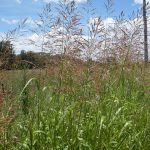
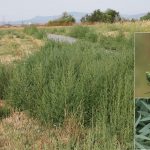
![6th Happiness [CC BY-SA 3.0 (https://creativecommons.org/licenses/by-sa/3.0)]](https://opensanctuary.org/wp-content/uploads/2019/07/6H-Lambs-quarter-150x150.jpg)
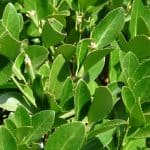

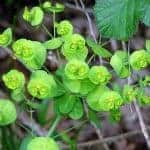
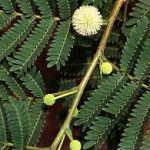

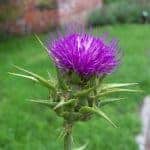
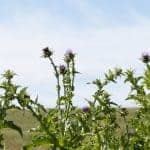

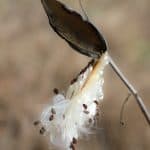






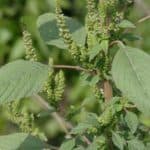

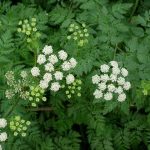
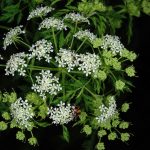
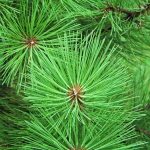
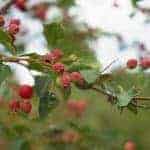
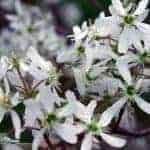
![Mokkie [CC BY-SA 3.0 (https://creativecommons.org/licenses/by-sa/3.0)]](https://opensanctuary.org/wp-content/uploads/2019/07/Blue_Snakeweed_Stachytarpheta_indica_1-150x150.jpg)
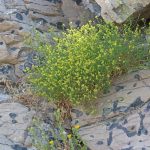
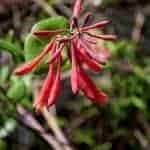
![Stan Shebs [CC BY-SA 3.0 (https://creativecommons.org/licenses/by-sa/3.0)]](https://opensanctuary.org/wp-content/uploads/2019/07/Sophora_secundiflora_flower-150x150.jpg)
